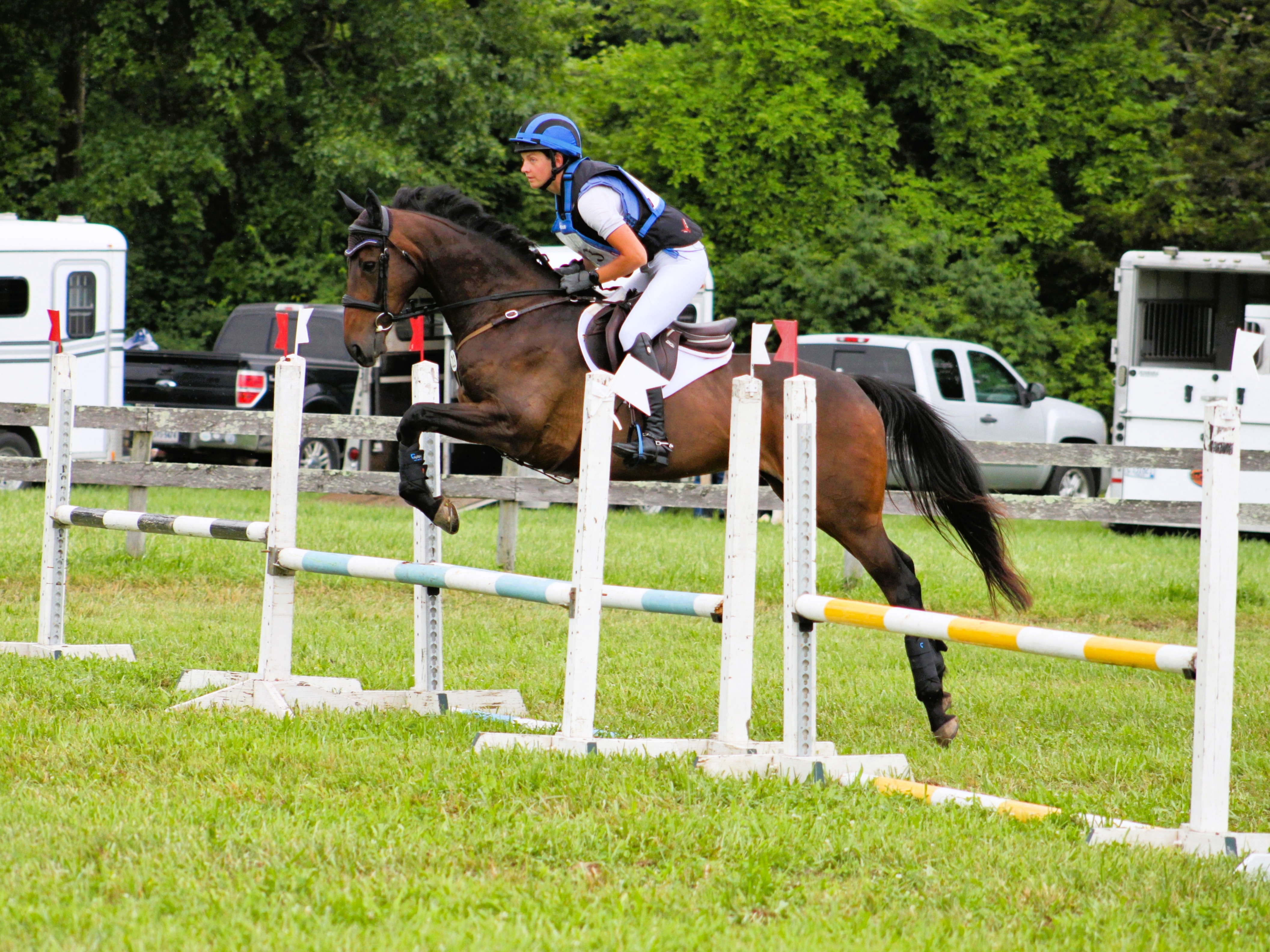A simple change of lead through the trot will appear on your dressage tests as you move into the Preliminary and above level of eventing, so it’s a good thing to practice these transitions at home. Not only are simple changes tested, they’re also a key ingredient to eventually moving on to flying changes. At the least, the canter-trot-canter transition is highly useful for achieving balance, impulsion, and straightness.
But this is often a task easier said than done — as are most things with riding, let’s be honest — so Amelia Newcomb has broken this concept down in one of her latest instructional videos. I’ll borrow some notes from this video’s description:
Your goal for your trot-canter-trot transitions across the diagonal is to turn up the diagonal at canter, transition to trot just before X, use 5-6 trot steps to change bend, and transition back to canter. This is your end goal, but when we are beginning to teach the transition, we’ll use much more trot to prepare.
To start teaching the change of lead through trot:
1) Pick up the canter, and turn onto a diagonal line
2) At X, or slightly after, transition to trot
3) Change bend, and pick up the canter again at C
As your horse gets better and better at this exercise, you can decrease the amount of trot in between the canter until you reach your goal of just 5-6 trot steps on the diagonal! When you are riding this exercise, make sure to ride good corners and get your horse bending. Even ride a little shoulder fore as you are working on these transitions.
If your horse is running through your aids, or has trouble bending during your transition down to trot, try riding some 10m circles at X. You can do a figure eight pattern with these circles or just ride one 10m circle. To ride the figure eight:
1) At X, start circling the direction you were originally tracking (if you were going left, then circle left first, and vice versa)
2) Coming out of your first circle, change bend, and ride a circle the other direction
3) Then, as you are finishing your second circle, continue on the diagonal
You can learn much more from Amelia on her full YouTube page here — plenty of great info here to take back to your own rides! Save this one and try it on your own.



















